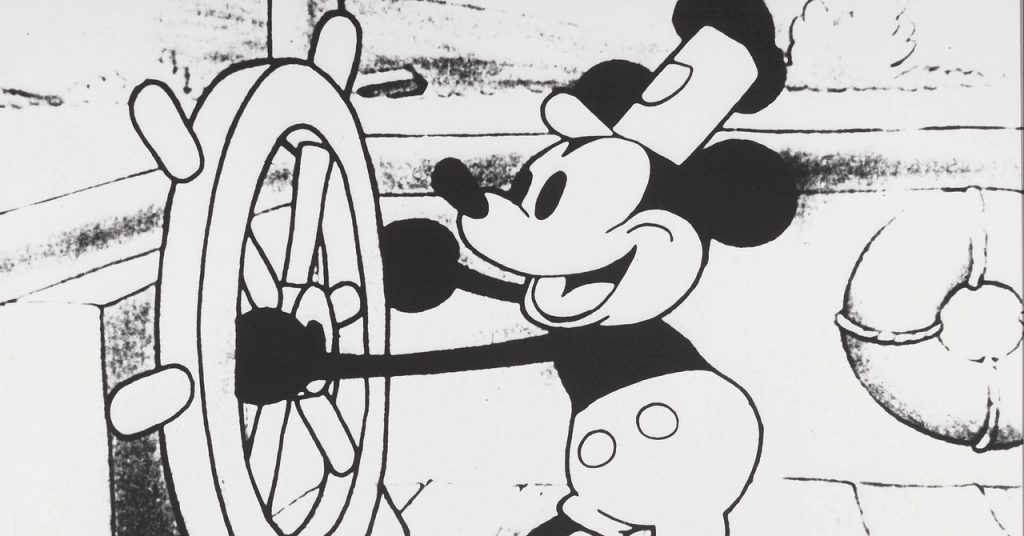On January 1, Mike Neville gave Midjourney the following prompt: “Steamboat Willie drawn in a vintage Disney style, black and white. He is dripping all over with white gel.”
There’s no polite way to describe what this prompt conjured from the AI image generator. It looks, very much, like Mickey Mouse is drenched in ejaculate.
At the start of every year, a crop of cultural works enters the public domain in the United States. When copyright expires on particularly beloved characters, people get excited. This is an especially eagerly anticipated year. An early version of Mickey Mouse, colloquially known as Steamboat Willie, entered public domain in 2024 after nearly a century of rigorously enforced copyright protection. Within days, an explosion of homebrewed Steamboat Willie art hit the internet, including a horror movie trailer, a meme coin—and, of course, a glut of AI-generated Willies. Some are G-rated. Others, like “Creamboat Willie,” are decidedly not. (Willie doing drugs is another popular theme.)
While a contingent of the people sharing naughty Willie images are simply goofing around, others had surprisingly sober-minded intentions. Neville, an art director who posted his image on social media using the handle “Olivia Mutant-John,” has a lively sense of humor, but his experiment wasn’t solely a scatalogical joke. “My interest in generating the assets was to explore copyright thresholds and where the tools are currently,” he says. He’d noticed that it was easy to find examples of copyrighted characters on popular image-generating tools (a point also recently made by AI scientist Gary Marcus, who posted AI-generated depictions of SpongeBob SquarePants as an example) and wanted to see how far he could push an image generator now that Steamboat Willie was in the public domain.
Neville isn’t the only person conducting AI Willie experiments with copyright on his mind. Pierre-Carl Langlais, head of research at the AI data research firm OpSci, created a fine-tuned version of Stable Diffusion he called “Mickey-1928” based on 96 public domain stills of Mickey Mouse from the 1928 films Steamboat Willie, Plane Crazy, and Gallopin’ Gaucho. “It’s a political stance,” he says.
Langlais firmly believes that people should be paying closer attention to where AI tools get their training data; he’s working on several separate projects focused on creating models that train exclusively on public domain works to that end. He whipped it up in hours, because it’s essentially a filter laid atop of Stable Diffusion, not a totally custom data set. (That would be a far more labor-intensive project.)
Read the full article here









